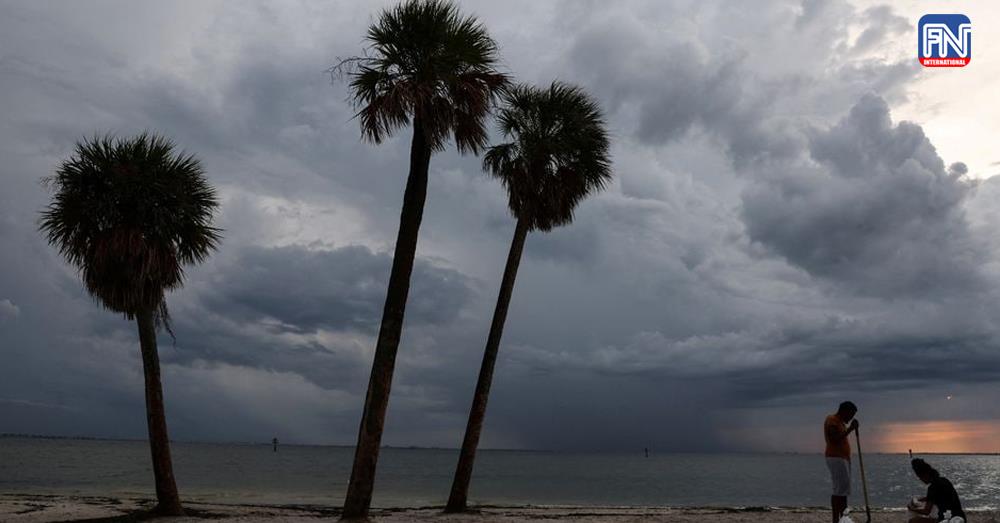SARASOTA, Sept 27 (Reuters) - Residents of Florida's Gulf Coast on Tuesday boarded up homes, packed up their vehicles and headed for higher ground as Hurricane Ian drew near, threatening to bring a deadly storm surge and more than a foot of rain to some areas.
Ian churned across the southeastern edge of the Gulf of Mexico headed for Florida after slamming into Cuba earlier in the day, leaving the entire country without power, forcing mass evacuations and swamping fishing villages.
More than 2.5 million Floridians were under evacuation orders or warnings with the sprawling storm on track to make landfall as a Category 3 or Category 4 hurricane on Wednesday evening somewhere along Florida's Gulf Coast.
A Category 3 storm on the five-step Saffir-Simpson scale carries maximum sustained winds of up to 129 miles per hour (208 km per hour). The latest 8 p.m. EDT (2100 GMT) hurricane advisory put Ian's top winds at 120 mph (195 km per hour).
Ian was most likely to come ashore south of Tampa near Sarasota, the National Hurricane Center (NHC) said. That region - home to miles of sandy beaches, scores of resort hotels and numerous mobile home parks - is a favorite with retirees and vacationers alike.
"I know I should be scared of this one, but I'm too busy to be scared. I just know we have to go," said John O'Leary, a jazz pianist from Tampa, said as he and his wife loaded food, water and family photos into their car before heading to his mother's house in Palm Harbor, 25 miles (40 km) to the west.
O'Leary, 36, was one of the thousands of motorists to hit the road as they fled low-lying areas in hopes of avoiding a potentially life-threatening storm surge that, according to forecasters, could reach 12 feet (3.7 meters) in the Sarasota area.
While predictions remained imprecise for where the storm would come ashore, "the impacts are going to be far, far broader than just where the eye of the storm happens to make landfall," Governor Ron DeSantis said.
DeSantis warned of the potential for devastating Hurricane Harvey-like flooding that struck the Houston area in 2017, the result of a slow-moving storm piling up high water.
Parts of central Florida could see as much of 2 feet (0.6 meter) of rain from Ian, according to the National Weather Service. The NHC also issued extensive storm surge warnings for about half of western Florida's shoreline, with predictions of life-threatening coastal flooding up to 12 feet from wind-driven high surf.
Florida's director of emergency management, Kevin Guthrie, urged residents in evacuation zones to move to safety.
"The time to evacuate is now. Get on the road," he said.
To ease traffic congestion, authorities suspended toll collections along major highways in central Florida, the Tampa Bay area and the interstate stretch across the Everglades known as Alligator Alley.
Some residents, such as Vanessa Vazquez, 50, a software engineer in St. Petersburg, said they planned to ride out the storm at home despite evacuation warnings.
"I'm staying put," Vazquez said. "I have four cats and I don't want to stress them out. And we have a strong house."
If Ian strikes Tampa, it would be the first hurricane to make landfall in the area since the Tarpon Springs storm in 1921.
It also may prove one of the costliest as the latest simulations projected storm-related damages ranging from $38 billion to more than $60 billion, Enki Research said on Tuesday.
